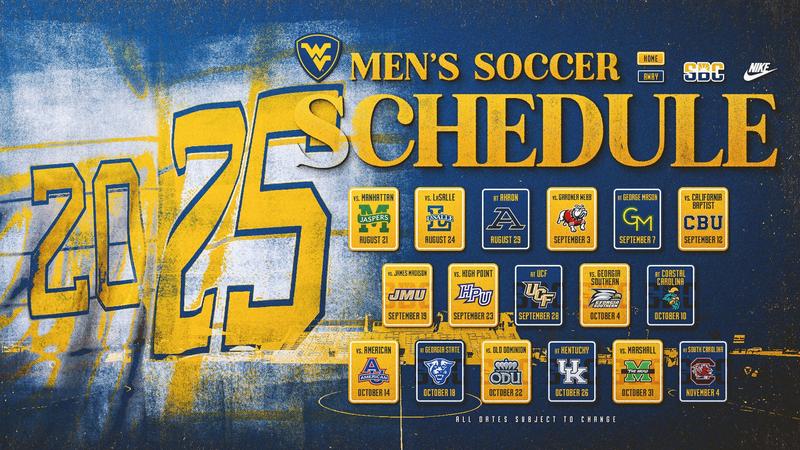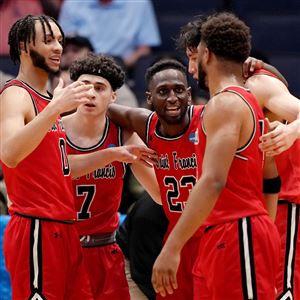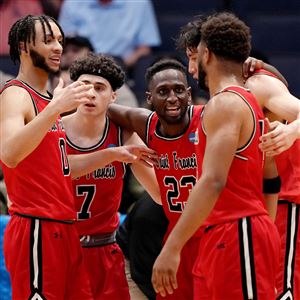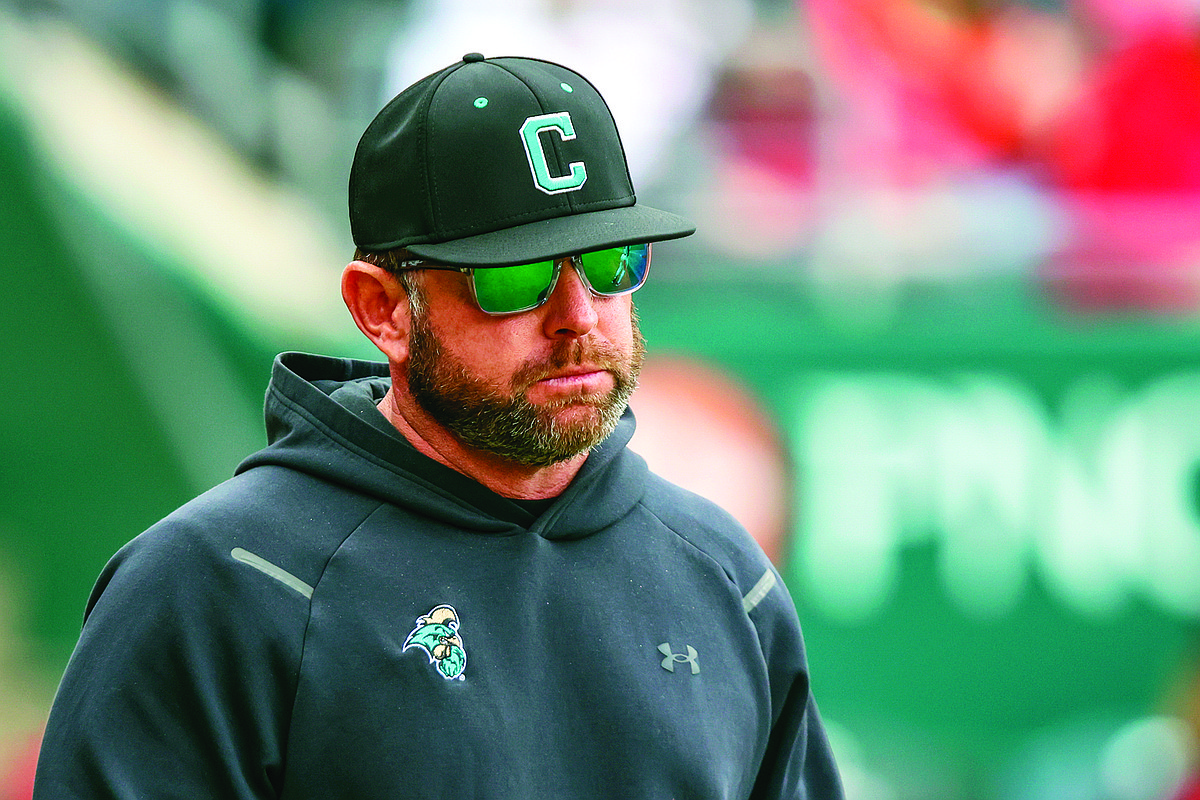*Most of this is based on ongoing litigation, so there’s a small chance some of these won’t be implemented. I’ll do my best to have this as up-to-date as possible
College sports has been experiencing a massive amount of change in the past five years, to the point where it’s almost unrecognizable. The NCAA has gone from being the judge, jury, and executioner on all matters to now being overruled by actual judges. They’re losing court cases left and right, to the point where they’re now hesitant to act.
If you haven’t been following the ‘boring’ side of sports, a lawsuit was filed about five years ago regarding compensation for student-athletes (House vs NCAA). This was separate from NIL, but the two are very much tied together.
With all the recent changes, I thought it might be helpful to have this all in one place. I’ve done the best I can to summarize it all, since there’s a lot of “lawyer talk”.
First, why is all of this happening now? Why not 20 years ago?
It was rare to hear of court ruling about the NCAA up until about 10 years ago regarding student athlete compensation, and now we’ve had at least three major ones since 2020. In my opinion, a lot of that was because there wasn’t as much money involved. Students originally played athletics as an extracurricular activity, similar to joining a club. Universities would charge admission or make TV deals to help with the cost of operation, and offered scholarships so the athletes wouldn’t have to decide between working or playing sports.
As those media deals became more valuable, especially in the late 2000s, the amount of revenue coming in exploded. Since 100% of the revenue wasn’t necessary to keep the athletic department afloat, this led to the legitimate question of what to do with all of this money. However, the NCAA had a policy that those funds remained with the university. Had athletes been making these arguments back in the day, they would have been arguing about what to do over a few hundred dollars; not worth getting lawyers involved. But when universities are now regularly pulling in $50 million a year from sports, that old policy definitely became worth challenging.
On top of that, the full cost of attending school wasn’t always a guarantee for student-athletes, and was even limited until as recently as the 1980s. Over time those costs have skyrocketed; according to the Education Data Initiative, the inflation adjusted annual cost of tuition has gone up from about $2,800 in 1980 to $9,000 in 2023. That doesn’t account for living expenses, which have also gone up in the past 40 years, though not as much as tuition.
So from an athlete’s perspective, their costs have gone up while the universities revenue has gone up even more. The athlete has a reasonable argument to be able to negotiate to earn some of that revenue since they reasonably contributed to it.
Pre 2021
Up until 2021, the only compensation student-athletes could receive were directly related to the cost of attending school; scholarships, living expenses, textbooks, and in some cases stipends, if other benefits did not cover the full cost of attending university. This was based on NCAA policy. The hot topic that caused the most debates was the NCAA not allowing athletes access to other types of financial opportunities available to other students. Schools could offer assistance in attending school, but the athlete couldn’t get anything else. There were even limits on part time jobs. There have been debates about the NCAA’s authority for years, but it largely wasn’t worth fighting until recently.
NIL Era
In 2021 that all changed when a court case made its way to the Supreme Court (link to Harvard’s summary, if you want a deep dive). Not only was the Court unanimous in its opinion, but it also bluntly stated the NCAA violated anti-trust laws with these policies. Reading between the lines, it sounded the Court was daring the NCAA to impose further limits. However, the Court didn’t specify NIL; they just said that the NCAA couldn’t impose limits or deny opportunities that were available to other students. For example, some college students will start businesses while still in school, like Mark Zuckerburg with Facebook. If Zuckerburg was an athlete he would have been violating old NCAA policy, but because he was a “normal” student there was no issue.
In response to this, the NCAA changed its policy, opening opportunities previously denied to athletes. That doesn’t mean everyone started making businesses; most student-athletes don’t have the time or resources to do so. But they could now do endorsement deals or be paid to appear at events. Thus began the NIL era, where student-athletes could now appear in Dr. Pepper commercials or sell autographed trading cards.
To help with this, alumni and fans started to organize NIL collective funds, which were separate (but affiliated) organizations with universities. Some operated as limited liability companies (LLCs), others operate as non-profits (501c3s, but the IRS is cracking down on those so they’ll likely change their structure). However, they are legally separate from the university whose athletes they would collect NIL funds for. Donors would contribute to this collective, who work with the community or businesses to find opportunities for these athletes, such as appearances at schools or public events. But individual parties still had the chance to arrange deals directly with the athletes themselves. In many cases student-athletes had agents to help with this, much like professional athletes do when making marketing deals.
One of the major rules that the NCAA has is that those NIL funds could not be tied to the athlete’s performance or have conditions (no quid-pro-quo or “pay for play”). Yes, I know what you’re thinking; no one follows those rules. It’s very hazy how much authority the NCAA has right now with NIL. The NCAA already tried saying athletes can’t negotiate deals before enrolling in schools, but the court got involved again and they rescinded that policy, though it’s still being reviewed. There’s been a few attempts at passing federal law but none have gained traction. Some states outright prohibit those types of deals, but when the deals go across states it gets messy.
The reason NIL seems so chaotic is because it isn’t clear what policies the NCAA, or even the universities themselves, can impose. Because NIL money does not legally go through the university, the NCAA likely cannot impose any controls, and implementing any will likely bring further lawsuits. While I’m not a lawyer (any actual lawyers are free to correct me, I’m just a humble statistician), the Supreme Court basically said the NCAA cannot impose any rules or regulations about income generated outside of athletics. An individual having a sandwich named after them at a local restaurant and getting a share of the profits is not an athletic event, even if the individual happens to be a college athlete. The question right now isn’t what should or shouldn’t be done, or what’s good or bad for athletics, but whether or not the NCAA or universities have the legal authority to impose any rules.
Transfer Portal
If you are reading this, you likely already know about how most of this works. Prior to 2021 an athlete could transfer between schools, but they would have to sit out a year that still counted towards their eligibility (four years). They could get waivers or special exceptions, such as being a graduate student, but for the most part athletes avoided transferring so they wouldn’t waste a year of eligibility. It initially had some limits, such as allowing a student to transfer once without sitting out a year, but most have been removed. Now you enter an online portal, where other schools can see who is available, though there are windows to do this that go in line with school semesters. Athletes can transfer as many times as they like.
Between the transfer portal and NIL changing around the same time, the world of college sports resembled free agency with few limits. In pro leagues there are rules prohibiting contacting players under contracts, when you can speak with players, and some limits on financial promises made in advance. It isn’t clear what limits the NCAA can impose, and right now it’s running more on the honor system than anything. If they do impose hard rules, I wouldn’t be surprised if we see more lawsuits. “Normal” students can transfer as they please without consequences, and athletes could challenge that if they aren’t given the same privileges.
JUCO Ruling
A quiet change this year came from another lawsuit from Diego Pavia.
Pavia started his college career in Junior College at the New Mexico Military Institute. He eventually made his way to Vanderbilt, but argued in court that his year playing in Junior College (JUCO) shouldn’t count towards his eligibility. Currently the NCAA limits athletes to four years to complete, with a few exceptions if a player doesn’t play for a year (such as medical exemptions or redshirts). Pavia’s argument was that since he couldn’t make any NIL money at the JUCO level, the NCAA was limiting how much NIL money he could potentially earn by not allowing him a full 4 years of eligibility at the Division I level. The courts ruled in Pavia’s favor, and while the NCAA is appealing this, for now players who played at the JUCO level were granted an extra year of eligibility. Recently the NCAA has yet to win any of these types of cases so it wouldn’t be surprising if this is a permanent ruling going forward.
This is a quieter change, but does have an impact on recruiting. Typically Division I schools would recruit high school students more than JUCO athletes, because the high school student had 4 years of eligibility. Now if they find a JUCO athlete they feel will be just as good, they don’t have to worry about them not staying as long as the high school recruit.
House Vs NCAA
So now to the big one that prompted this piece. If you thought NIL changed the game, just wait. This case is all about what funds athletes are entitled to that universities directly receive. This lawsuit was filed in 2020 (House vs NCAA). Last year the NCAA saw what was coming and is deciding to settle, rather than let it go farther in court and make themselves look worse. So as with any legal settlement there are conditions both sides got, but the athletes largely came out on top. In short, it’s all about how universities now can share with athletes revenue gained from various media deals.
Any site you go through will group the effects of the settlement into three areas. I’ve done my best to simplify them, since there is a lot of lawyer talk going on. Before I get to those, the settlement for now is a 10 year agreement, so this isn’t indefinitely set in stone. If unforeseen issues come up for either side, they can be addressed without further lawsuits or lengthy court processes.
Past compensation
The deal the NCAA agreed to includes paying back athletes who competed from 2016 to 2024. Since universities will be paying athletes going forward, it was decided it is fair to pay athletes who missed the opportunity because of timing. The exact amount varies by source, but the payment range looks to be $2.75-$3 billion. If that sounds like a lot, some estimate that had it gone to court that amount would have ballooned to $20 billion. The exact amount each former/current athlete receives is based on their situation. Football players from bigger conferences might get a few hundred thousand, swimmers at smaller schools may get a few hundred. It looks like universities will determine the exact amounts and athletes to pay, but there are conditions on how much has to be paid each year.
New Pay Method
Past athletes aren’t the only ones getting paid, universities can now directly pay athletes going forward (remember, the universities themselves weren’t paying NIL, the associated collectives were). The money that can be shared is revenue gained from media deals, sponsorships, or ticket revenue (for clarity I’m calling funds received through those “Media Revenue”). There are limits though; they can share up to 22% of total annual Media Revenue, with a limit of $20.5 million, subject to annual change. This essentially acts as a salary cap that professional leagues have. The revenue sharing will apply to the entire athletic department. The universities themselves will determine how much to allocate to each player and sport.
One of the agreements of the settlement was roster size limits. Right now there are only scholarship limits by sport. Part of the settlement is that the NCAA will instead have a limit on the number of players a team can have, regardless of what compensation there may be. Those roster limits were based on current roster sizes, regardless of how many scholarship players there are. For example, football is limited to 85 scholarships, but most teams have around 90-100 players, and the proposed roster limit is 105 football players. Those extra players came from offering partial scholarships or having someone play without a scholarship (walk-ons). However, there are disagreements about the exact limit, some wanting them to be higher, and also how to approach teams that are currently above the limits. The judge overseeing the deal suggested they get grandfathered in, but it doesn’t look like anyone has agreed to that yet. So far this seems to be the biggest source of consternation.
Another part of the settlement is more regulation on NIL. The NCAA is finding their power getting smaller and smaller, and it showed with NIL. Right now it’s the Wild West, where we all know teams are contacting other team’s players and offering NIL deals to transfer. The NCAA had little to no authority to investigate these. Part of the settlement was NIL payments over $600 are subject to review, specifically to see if they violate the NCAA policy of no incentives tied to NIL deals (currently no one is challenging this process). They will be reviewed by a third party clearinghouse, currently rumored to be the financial giant Deloitte, to see if there were any conditions about the NIL payment that violates NCAA policy. So if a player gets a $100,000 NIL deal, this third party will look into it to see if there were any conditions tied to it, such as a “transfer here and we’ll get you’ll $100,000 NIL deal” arrangement. This offers some control, as some schools could have potentially used NIL funds to skirt the revenue sharing limit. However, this would only address schools offering other players NIL deals; it doesn’t look like there are any repercussions to teams calling other players and offering deals from their revenue sharing pool, as long as they don’t exceed the cap limit.
There was a brief window where not all schools had to participate in the settlement, only those specified as defendants were included (mainly those from the power conferences). But the NCAA proposed some rule changes to go in line with the settlement.
Thoughts
Oh boy, this is a lot. I’ll do some more research on the implications, but here are my initial thoughts:
NIL will change…. maybe
We’ll see how thorough and honest the third party clearinghouse is, but if it goes the way the NCAA intends, schools won’t be able to make large NIL offers in advance any more. Players can still get those funds, but most deals will be reviewed to ensure no incentives were tied to them. Any promised funds will have to come from the limited Media Revenue pool. It doesn’t look like there are any limits to how much in NIL a player can receive, since legally those funds don’t go through the university. I wouldn’t be surprised if we see the NIL deals decrease a little, only because they aren’t the sole source of income anymore for athletes. States will continue to implement or modify laws about NIL, which will supersede anything the NCAA implements.
Amateurism is all but gone.
College athletics is increasingly resembling professional leagues. Universities are now having full fledged business departments managing funds, such as Andrew Luck being named the General Manager for Stanford’s football team. The 10 year settlement deal resembles the collective bargaining agreement (CBA) that owners of professional teams have with player’s unions. There will be rules about spending, possible exceptions, guaranteed money, and provisions for third parties. If an athlete is injured in fall camp and has to miss the season, do they still get paid? Would that count towards the spending cap? All of those questions will almost have to be addressed in contracts, since both universities and athletes will want to be financially protected.
Transfer portal doesn’t officially change
Nothing in the settlement addresses the transfer portal, but that wasn’t part of the lawsuit to begin with, and it would have been out of place to include any new changes. It appears the NCAA still can control some aspects of the portal, though it likely will be based on consensus opinion among schools.
So is all of this a win for big schools? Small schools?
There’s a lot to unpack here, and I’d prefer to do more research before making a definitive opinion. The cap limit helps balance it a little, but you have to have the money in the first place. I see it being similar to pro baseball where teams in bigger markets have more money to work with than the teams in smaller ones. The smaller schools will never be able to spend as much, but at least they can spend now.
It Ain’t over
We’ll see more court rulings and lawyer talk. The NCAA still says it has the authority to impose some limits on NIL, but as of now no one has challenged that. I’m guessing student-athletes will want to continue their hot streak in court and question any new controls the NCAA implements. The NCAA likely won’t dare to put limits on total NIL earnings, but they may attempt to regulate promised deals more.
One aspect that still hasn’t been addressed is Title IX. Title IX, as it relates to college sports, establishes equality among male and female athletes. It includes regulating the amount of scholarships a university can offer between the two, but it isn’t clear how much of this revenue sharing falls under this law. Some schools were planning to share up to 90% of their available funds on football and men’s basketball players, since those are typically the major money makers, but that might violate Title IX. One side is arguing that the revenue has to be split 50% between male and female sports, regardless of who generated the revenue. I anticipate it being largely a political debate.
Closing
These next few years are going to be interesting. While the NCAA, student-athletes, and universities will have an idea of what to expect, until we actually see all these changes in effect, no one will know for sure what it will all look like.

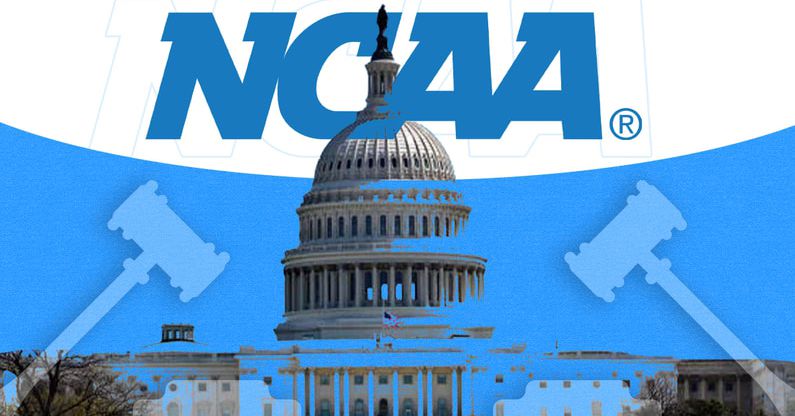

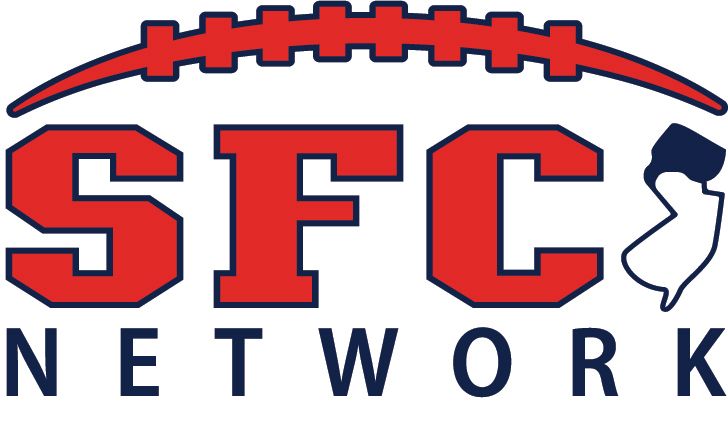
 Recognized as one of the top high school football conferences in the nation, The SFC Network will stream coverage of New Jersey’s top-tier programs including, Bergen Catholic, Delbarton, Paramus Catholic, St. Joseph Regional, Don Bosco, Seton Hall Prep, St. Peter’s Prep, Pope John, DePaul, and others.
Recognized as one of the top high school football conferences in the nation, The SFC Network will stream coverage of New Jersey’s top-tier programs including, Bergen Catholic, Delbarton, Paramus Catholic, St. Joseph Regional, Don Bosco, Seton Hall Prep, St. Peter’s Prep, Pope John, DePaul, and others.